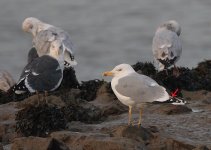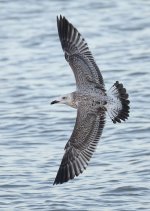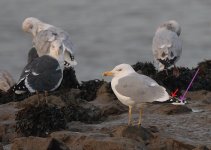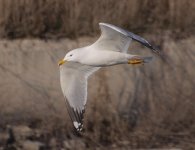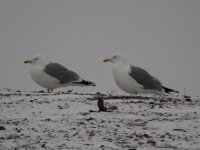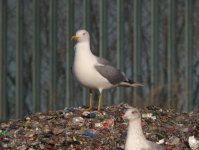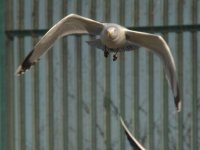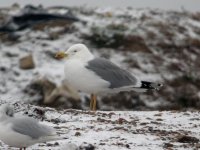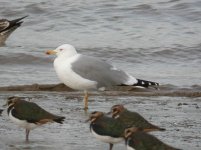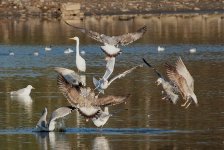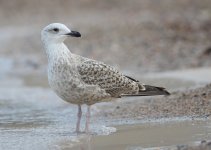lou salomon
the birdonist
That is not unusual for Yellow-legged Gulls here. I've posted pics here before of YLGs with white tipped P10s.
The structure and leg length all suggest Yellow-legged Gull as does the iris colour. The head shape is all wrong too and it has the typical square, broad, brutish look of a YLG. A Caspian typically has a smaller, domed round head atop a large body.
The legs are also yellow; doesn't always mean YLG, of course, but that's what this bird is.
Cheers,
Andy.
not the tip is all white, andy (which wouldn't bother me at all, neither do the yellow legs) but the underside of p10 tongue is too long: see it marked in the attached pic. the tongue end is nice rectangular, bill is parallel edged without a hanging gonys and curvature of upper mandible is not as strong as usually in micha. this is a male caspian gull, imo.
Attachments
Last edited:




